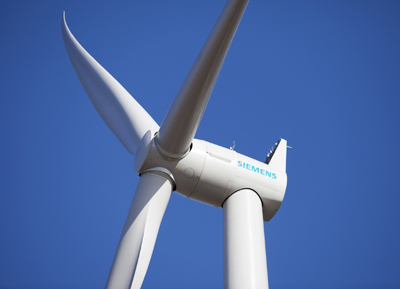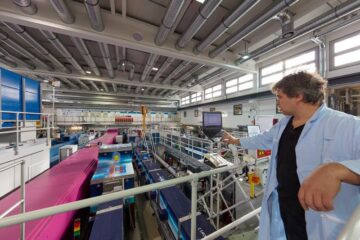Minnesota Power orders first Siemens wind turbines in output-enhanced 3-MW class

Capacity of Siemens' 3-MW D3 platform wind turbines increases to 3.2 MW thanks to the use of larger rotors and higher towers.
Siemens Energy has been awarded a major order by Minnesota Power for 64 units of the company's latest 3-MW D3 platform wind turbines to be installed at the Bison Wind Energy Center near New Salem, North Dakota. The innovative wind turbines feature a 113-meter rotor and 92.5-meter hub height and thus increased rating of 3.2 megawatts. Installation of the turbines is scheduled to begin in mid-June 2014, and commercial operation is slated for December 2014. The scope of supply includes transportation, installation and commissioning, as well as a three-year service and maintenance agreement.
„With our innovative 3-MW direct drive turbine we are increasing annual energy output with a larger rotor and a higher tower,“ states Dr. Markus Tacke, CEO of Siemens Wind Power. „We greatly value Minnesota Power's confidence in our technologies and services and are very pleased to partner with them once again as they continue to provide reliable, affordable and sustainable power to their customers.“
The blades will be manufactured at Siemens' facility in Fort Madison, Iowa. Additionally, the D3 nacelle component will be assembled in Hutchinson, Kansas. Assembly of this specific major component was recently moved from the company's nacelle facility in Brande, Denmark, to Hutchinson, Kansas, which further demonstrates the company's commitment to the U.S. wind industry.
„We're pleased to partner with a world leader like Siemens as wind energy production develops and matures,“ said Minnesota Power Chief Operating Officer Brad Oachs. „With the help of Siemens, we've integrated new direct drive technology into our Bison project while at the same time staying ahead of Minnesota's aggressive renewable energy standard.“
By 2025, utilities in Minnesota are required to supply 25 % of their power from renewables. Operators of nuclear power plants have to reach 30% renewables even earlier by 2020.
The 205-MW Bison 4 addition will increase Minnesota Power's Bison Wind Energy Center's total MW output to nearly 500 MW. Siemens also supplied all of the wind turbines for the previous three phases of the Bison Wind Energy Center, which went into commercial operation in 2010 and 2012.
Wind power and energy service are part of Siemens' Environmental Portfolio. Around 43 percent of its total revenue stems from green products and solutions. That makes Siemens one of the world's leading providers of eco-friendly technology.
The Siemens Energy Sector is the world's leading supplier of a broad spectrum of products, services and solutions for power generation in thermal power plants and using renewables, power transmission in grids and for the extraction, processing and transport of oil and gas. In fiscal 2013 (ended September 30), the Energy Sector had revenues of EUR26.6 billion and received new orders totaling approximately EUR28.8 billion and posted a profit of approximately EUR2 billion. On September 30, 2013, the Energy Sector had a work force of approximately 83,500. Further information is available at: http://www.siemens.com/energy
Reference Number: EWP201402028e
Contact
Mr. Torsten Wolf
Energy Sector
Siemens AG
Lindenplatz 2
Media Contact
Weitere Informationen:
http://www.siemens.comAlle Nachrichten aus der Kategorie: Unternehmensmeldungen
Neueste Beiträge

Bakterien für klimaneutrale Chemikalien der Zukunft
Forschende an der ETH Zürich haben Bakterien im Labor so herangezüchtet, dass sie Methanol effizient verwerten können. Jetzt lässt sich der Stoffwechsel dieser Bakterien anzapfen, um wertvolle Produkte herzustellen, die…

Batterien: Heute die Materialien von morgen modellieren
Welche Faktoren bestimmen, wie schnell sich eine Batterie laden lässt? Dieser und weiteren Fragen gehen Forschende am Karlsruher Institut für Technologie (KIT) mit computergestützten Simulationen nach. Mikrostrukturmodelle tragen dazu bei,…

Porosität von Sedimentgestein mit Neutronen untersucht
Forschung am FRM II zu geologischen Lagerstätten. Dauerhafte unterirdische Lagerung von CO2 Poren so klein wie Bakterien Porenmessung mit Neutronen auf den Nanometer genau Ob Sedimentgesteine fossile Kohlenwasserstoffe speichern können…





















